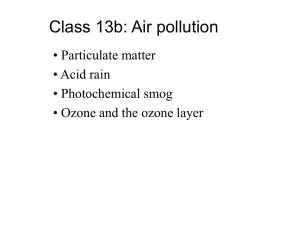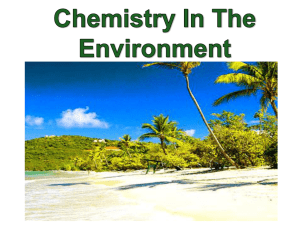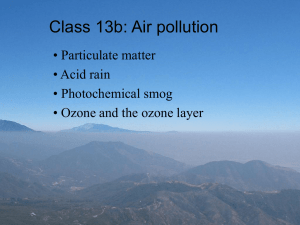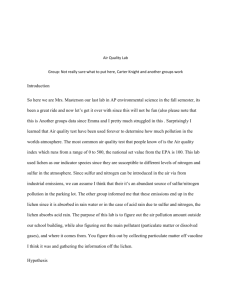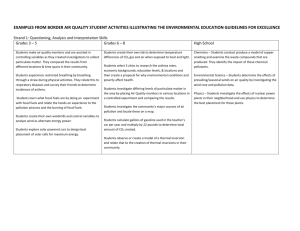Air pollution reading
advertisement
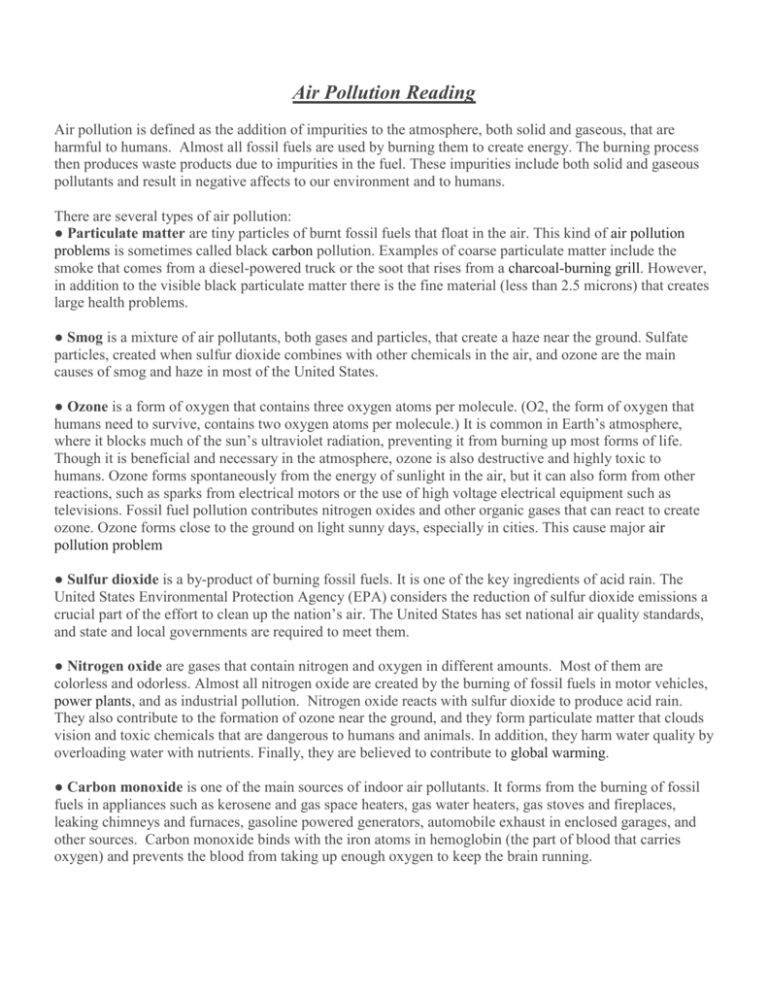
Air Pollution Reading Air pollution is defined as the addition of impurities to the atmosphere, both solid and gaseous, that are harmful to humans. Almost all fossil fuels are used by burning them to create energy. The burning process then produces waste products due to impurities in the fuel. These impurities include both solid and gaseous pollutants and result in negative affects to our environment and to humans. There are several types of air pollution: ● Particulate matter are tiny particles of burnt fossil fuels that float in the air. This kind of air pollution problems is sometimes called black carbon pollution. Examples of coarse particulate matter include the smoke that comes from a diesel-powered truck or the soot that rises from a charcoal-burning grill. However, in addition to the visible black particulate matter there is the fine material (less than 2.5 microns) that creates large health problems. ● Smog is a mixture of air pollutants, both gases and particles, that create a haze near the ground. Sulfate particles, created when sulfur dioxide combines with other chemicals in the air, and ozone are the main causes of smog and haze in most of the United States. ● Ozone is a form of oxygen that contains three oxygen atoms per molecule. (O2, the form of oxygen that humans need to survive, contains two oxygen atoms per molecule.) It is common in Earth’s atmosphere, where it blocks much of the sun’s ultraviolet radiation, preventing it from burning up most forms of life. Though it is beneficial and necessary in the atmosphere, ozone is also destructive and highly toxic to humans. Ozone forms spontaneously from the energy of sunlight in the air, but it can also form from other reactions, such as sparks from electrical motors or the use of high voltage electrical equipment such as televisions. Fossil fuel pollution contributes nitrogen oxides and other organic gases that can react to create ozone. Ozone forms close to the ground on light sunny days, especially in cities. This cause major air pollution problem ● Sulfur dioxide is a by-product of burning fossil fuels. It is one of the key ingredients of acid rain. The United States Environmental Protection Agency (EPA) considers the reduction of sulfur dioxide emissions a crucial part of the effort to clean up the nation’s air. The United States has set national air quality standards, and state and local governments are required to meet them. ● Nitrogen oxide are gases that contain nitrogen and oxygen in different amounts. Most of them are colorless and odorless. Almost all nitrogen oxide are created by the burning of fossil fuels in motor vehicles, power plants, and as industrial pollution. Nitrogen oxide reacts with sulfur dioxide to produce acid rain. They also contribute to the formation of ozone near the ground, and they form particulate matter that clouds vision and toxic chemicals that are dangerous to humans and animals. In addition, they harm water quality by overloading water with nutrients. Finally, they are believed to contribute to global warming. ● Carbon monoxide is one of the main sources of indoor air pollutants. It forms from the burning of fossil fuels in appliances such as kerosene and gas space heaters, gas water heaters, gas stoves and fireplaces, leaking chimneys and furnaces, gasoline powered generators, automobile exhaust in enclosed garages, and other sources. Carbon monoxide binds with the iron atoms in hemoglobin (the part of blood that carries oxygen) and prevents the blood from taking up enough oxygen to keep the brain running.
